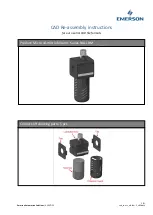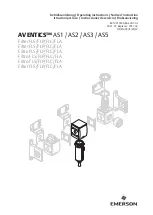
Schaffner Group
User and Installation Manual
Ecosine evo
October 2018
11/50
2. Filter selection
Ecosine evo passive harmonic filters need to be carefully selected and configured in order to enjoy maximum
benefits. Besides the enclosed selection tables and the product datasheets included in the online configurator
(
myecosine.com
), Schaffer advices to verify the selection by using the Schaffner Power Quality Simulator tool
SchaffnerPQS3, available at
pqs.schaffner.com
.
Step 1: Grid frequency
Determine, whether the system in consideration will be operated in a 50 Hz or 60 Hz electricity grid, and
select the corresponding filter series according to the following table:
50 Hz grid
Europe, Middle East, parts of Asia, parts of South America
FN 3440/FN 3441
FN 3450/FN 3451
60 Hz grid
North and Central America, parts of Asia, parts of South America
FN 3442/FN 3443
FN 3452/FN 3453
Note:
a 50 Hz filter will not provide satisfying harmonics mitigation in a 60 Hz grid, and vice versa.
Step 2: Grid voltage
Verify that the grid configuration is suitable for standard ecosine evo passive harmonic filters according to the
following table:
50 Hz grid
Nominal voltage 380–415 V AC
TN, TT, IT configuration
50 Hz grid
Nominal voltage 440–500 V AC
TN, TT, IT configuration
60 Hz grid
Nominal voltage 380–415 V AC
TN, TT, IT configuration
60 Hz grid
Nominal voltage 440–480 V AC
TN, TT, IT configuration
Step 3: Rectifier type, presence of DC-link choke in drive
FN 3440 FN 3441 FN 3450 FN 3451 FN3442 FN3443 FN 3452 FN 3453
For 6-pulse diode rectifier
without DC-link choke
For 6-pulse diode rectifier
with 8% DC-link choke
For SCR rectifier
Note:
For 6-pulse diode rectifier with DC-link choke smaller than 8%, it is recommended to choose
FN 3440, FN 3450, FN 3442 or FN 3452 if 5% THID is required.
Step 4: Rectifier/Drive input power
The individual filter must be selected with respect to the rectifier/motor drive input power in kW respectively in
HP. It is important to match rated filter power as close as possible with the effective input power of the
rectifier/drive.
Note that if the rectifier/drive is being operated very close to its rated power, then the filter can be selected by
the motor drive’s nominal power rating. However, if the drive will be operated e.g. at only 66% of its rated
power, then a smaller filter should be selected in order to get maximum harmonics mitigation performance
and the optimum in terms of cost, size, and weight. In that case the customer is responsible to ensure that












































